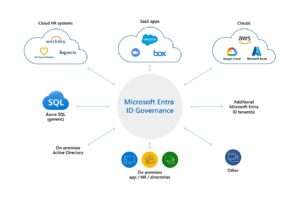Imagine a city where traffic lights anticipate your car’s approach, waste disappears magically, and your smartphone guides you to the perfect parking spot. This isn’t science fiction; it’s the vision of smart cities, where technology and data are harnessed to improve services, infrastructure, and ultimately, the quality of life for residents.
But how does it work? Smart cities leverage a range of interconnected technologies, including:
- Internet of Things (IoT): A network of sensors embedded in everything from streetlights to parking meters to trash cans, collecting real-time data on the city’s pulse.
- Big Data Analytics: This data is then analyzed by powerful algorithms to identify patterns, predict trends, and inform decision-making.
- Artificial Intelligence (AI): AI takes it a step further, using the analyzed data to automate tasks, optimize processes, and even proactively address potential issues.
So, what are the potential benefits of smart cities? Here are a few examples:
1. Enhanced Efficiency
- Smarter traffic management: Sensors and AI optimize traffic flow, reducing congestion and emissions.
- Dynamic energy management: Grids adapt to real-time demand, leading to more efficient energy use and cost savings.
- Automated waste collection: Sensors track bin levels, optimizing collection routes and reducing waste overflow.
2. Improved Citizen Services
- Public safety monitoring: Smart cameras and analytics enhance security and help prevent crime.
- Personalized public transportation: Apps provide real-time information and optimize routes for better service.
- Participatory democracy: Residents can use digital platforms to voice their opinions and engage in city planning.
3. Environmental Sustainability
- Smart meters and appliances: Residents can track and manage their energy consumption, promoting conservation.
- Green infrastructure: Green spaces, rainwater harvesting, and solar energy are integrated into urban planning.
- Pollution monitoring and mitigation: Sensors track air and water quality, enabling proactive measures to control pollution.
Of course, like any technological advancement, smart cities come with challenges:
- Privacy concerns: Collecting and analyzing large amounts of data raises concerns about individual privacy and potential misuse.
- Cybersecurity threats: Interconnected systems are vulnerable to cyberattacks, requiring robust security measures.
- Equity and inclusion: Unequal access to technology and digital literacy could exacerbate existing disparities.
Addressing these challenges is crucial for ensuring that smart cities benefit all residents. Transparency, public participation, and strong data governance are essential to building trust and safeguarding privacy. Additionally, ensuring affordable access to technology and digital literacy training is key to fostering an inclusive smart city environment.
The future of cities is undeniably intertwined with technology. Smart cities offer a promising vision of a more efficient, sustainable, and citizen-centric urban future. However, realizing this vision requires careful planning, responsible implementation, and a commitment to inclusivity and ethical data practices. As we navigate this technological transformation, it’s important to remember that smart cities are ultimately about people, and the goal is to harness technology to create cities that work not just for the tech-savvy, but for everyone.
















Add Comment